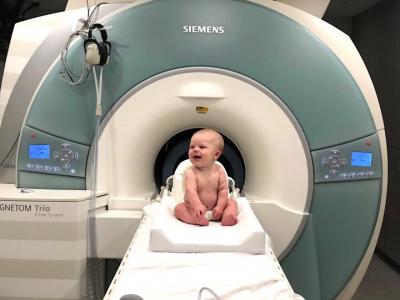
A baby becomes familiar with the fMRI facility before scanning. Credit: Cory Inman.
Within hours of birth, a baby’s gaze is drawn to faces. Now, brain scans of newborns reveal the neurobiology underlying this behavior, showing that as young as six days a baby’s brain appears hardwired for the specialized tasks of seeing faces and seeing places.
The Proceedings of the National Academy of Sciences (PNAS) published the findings by psychologists at Emory University. Their work provides the earliest peek yet into the visual cortex of newborns, using harmless functional magnetic resonance imaging (fMRI).